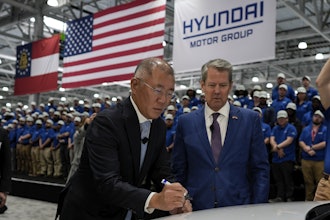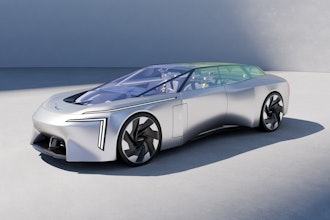This week I had the privilege of attending RAPID 2015 in Long Beach, California. The conference and exposition has presented the latest and greatest in 3D technology for the past 25 years, and this year was no exception.
From TE Connectivity’s unveiling of a fully functional 3D printed motorcycle to Forecast 3D’s reveal of a race car with more than 70 3D printed parts, the show floor was alive with innovation and ingenuity. The motorcycle, in particular, is quite impressive considering it was printed using ABS plastic and is capable of holding two adults.
The only components that were not 3D printed are the motor, drive, belt, electronics, some bolts, and the brake system. Plus, the motorcycle is all electric and capable of reaching speeds between 10 to 15 mph.
I was also impressed by the amount of startups on the show floor. One in particular, Cosine Additive, made its debut with an industrial grade, ultra large format AM1 3D printer.
The fused filament fabrication (FFF) additive manufacturing machine has a print volume of 43 x 34 x 37”, and can print with 50 to 500 micron resolution.
After speaking with Cosine Additive co-founder Andrew McCalip, it became apparent that this was more than just a job for him. “I’ve been machining things since I was twelve years old,” says McCalip. “We wanted to build an open platform industrial grade additive manufacturing machine with a large volume size and faster print speeds.”
I also had a chance to stop by the Formlabs booth, where I was able to check out their new 3D printer. Back in 2012, the young company (founded by researchers at the MIT Media Lab) started a Kickstarter campaign in 2012 to fund their stereolithography printer, the Form 1. The campaign was successfully backed after raising more than $2.9 million.
The company’s second-generation printer, the Form 1+, laser prints even faster and with a better surface finish. A new laser was added that is four times more powerful, cutting print time by up to 50%. Additionally, the machine’s new galvanometer control system moves the laser more quickly and accurately from the previous generation.
It was infatuating to watch the machine print an intricate object. A laser draws on the surface of a liquid plastic resin that hardens when exposed to a certain wavelength of light. The laser then proceeds to draw and harden layer upon layer until the model is finished.
For me, all the innovations on the show floor were best summed up by Made in Space CTO Jason Dunn’s keynote presentation on Tuesday. “Technology is just our tool. We are ultimately responsible for choosing the future we will build with it,” says Dunn. “I hope we can build cool futures together.”
Dunn had a vision to send a 3D printer to space, and in 2010 he co-founded Made in Space with the intention of doing just that. Dunn grew up dreaming that humans are capable of building colonies in space; however, he also knew we needed the innovative minds and technology to do so.
Do we have them now?
Where will 3D technology and innovation take us next? Share your thoughts by commenting below, tweeting me @kaylieannduffy, or at [email protected].






















